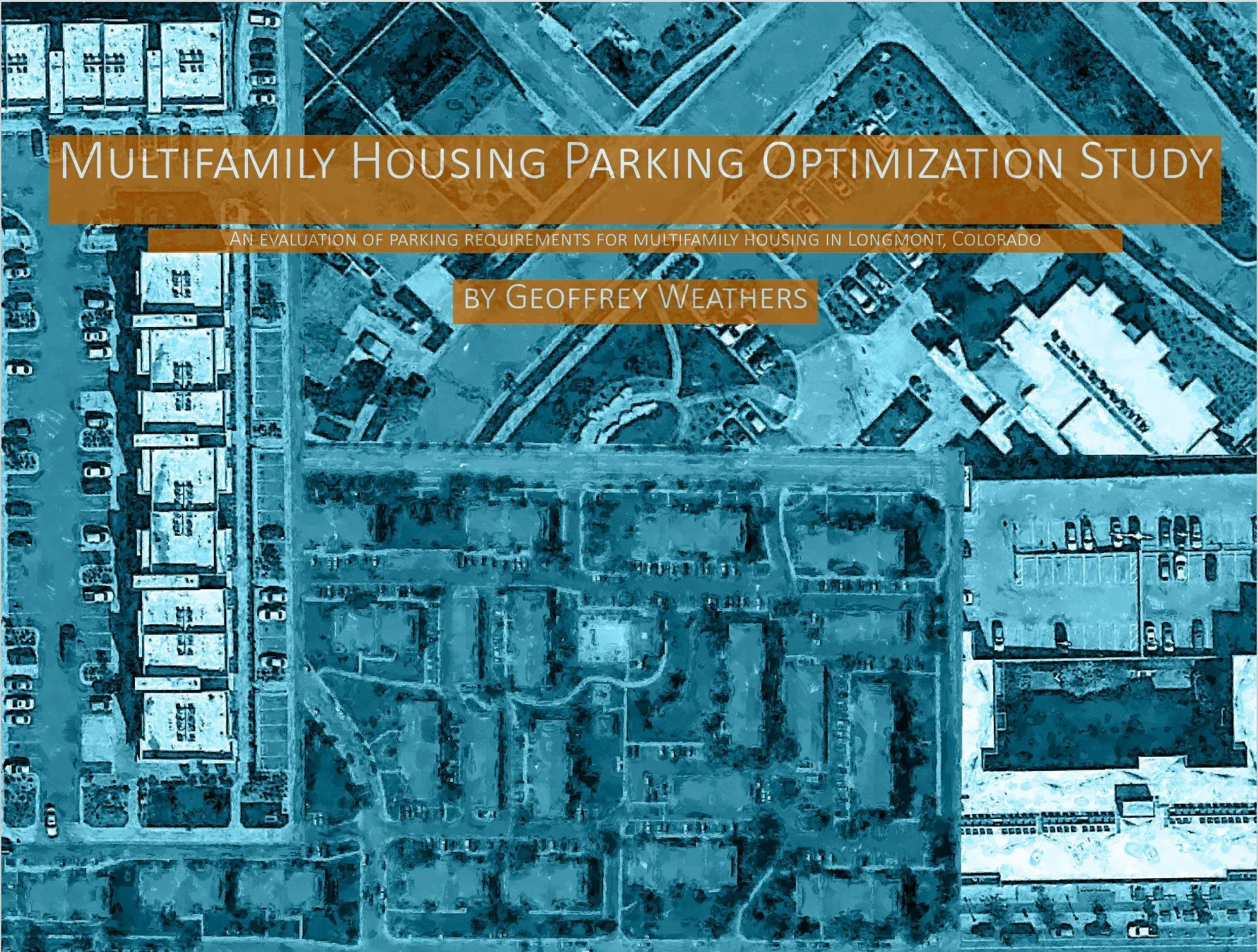Reflection on the Longmont Multifamily Parking Study
by Geoffrey Weathers
I have become used to hearing unchecked groans when I tell others of my interest in parking, so the ambivalence I felt about my graduate school capstone assignment had nothing to do with glamor. I had been introduced to the work of Donald Shoup and other parking critics during my studies and knew about the negative impacts of parking mandates on land use and transportation and its devastating social, environmental, and economic ramifications. The City of Longmont’s invitation to trigger a potential reduction in the parking supply by justifying the elimination of minimum parking requirements at multifamily developments was just the opportunity I had been hoping for.
It was, rather, more the methodology that the City of Longmont was asking for than the subject matter that at first made me wary. The core of my assignment was to compile peak-parking utilization rates at four multifamily housing developments in the city. For all the often-well-deserved praise it receives, data of this sort can prove to be a sort of poisoned chalice at times. I was aware of the tendency to see utilization rates as indicative of “parking demand” and, therefore, justifying the mandate for ever-increasing parking requirements. I remember speaking to one parking professional in the early stages of my project who advised me to recommend a minimum parking requirement based on the following formula: find peak utilization, add 10% for error, and toss in an additional 15% for buffer. The nausea I felt at the idea of supporting a regulation, in any degree, in excess of peak occupancy—possibly 25% in excess—was only alleviated when I reread the City of Longmont’s intentions.
The purpose of my project was not to ensure an abundance of free car storage but rather to help Longmont avoid the pitfalls of providing too much or too little parking. The objective was to put Longmont’s planning goals ahead of its parking mandate and help mitigate the negative impacts that parking has on the community to the greatest extent possible. This approach to testing minimum parking requirements was borne out by the academic literature on parking reform which affirmed the usefulness of parking utilization data as long as it’s properly prioritized and contextualized.
In the end, the data I was able to gather showed that even if Longmont’s existing minimum requirement had been reduced by 25%, no multifamily development in the study would have occupied all the spaces built for it. Moreover, even the developments where Longmont had in fact reduced requirements by more than 25% had excess capacity at peak-hour. At one of the sites with particularly good proximity to amenities and transit, and at which half the units were affordable, the parking lot was 42–50% empty at its peak usage.
I was relieved that the numbers I gathered so strongly supported Longmont’s hypothesis that minimum parking requirements at multifamily housing could be safely eliminated. More than that, however, I was gratified that the detailed information I was able to provide about each site suggested how context impacts a development’s parking occupancy rate. Because the report was able to account for local factors, city staff has been able to use it to go beyond eliminating minimum requirements to support implementing maximum parking limits where appropriate, to achieve optimal parking supply at multifamily dwellings in Longmont.
About the Author
Geoffrey Weathers is a Planning / Permit Technician for the Town of Superior, Colorado. He holds a Master’s degree in City, Community and Regional Planning from the University of Colorado Denver. Geoffrey recently won the 2022 WP Award for Student Planning Project of the Year for his Multifamily Housing Parking Optimization Study for Longmont, Colorado.

